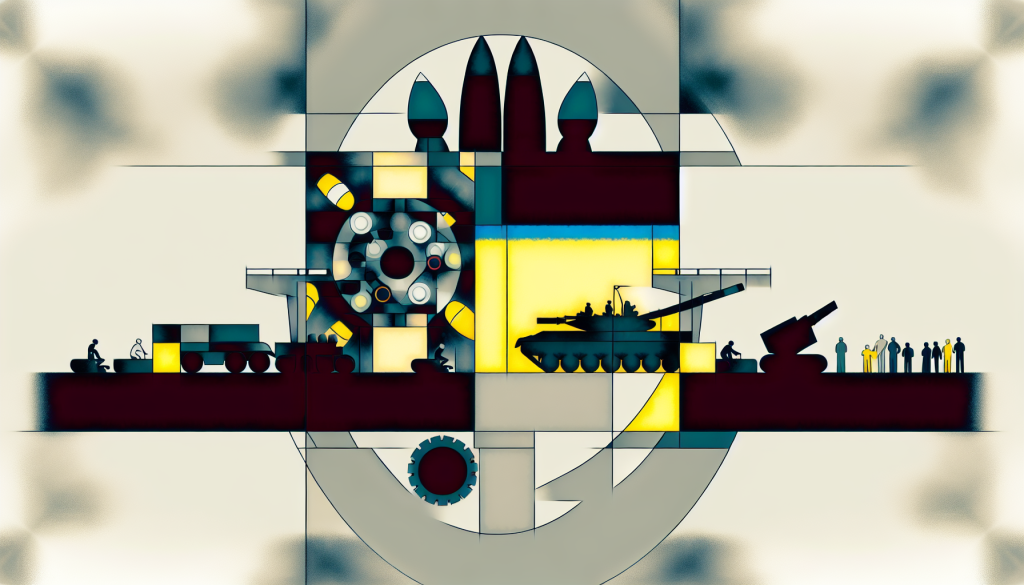The Rise of Ukraine’s Defense Sector: A Technological Revolution
Executive Summary
The landscape of Ukraine’s defense sector has drastically changed since Russia’s 2022 invasion, leading to an astonishing 350 percent growth in defense capabilities. This article delves into various facets of Ukraine’s military innovation, particularly its leading role in drone technology, production capabilities, international collaborations, and future prospects.
A Surge in Defense Growth
The full-scale invasion of Ukraine by Russia marked a pivotal moment. The urgency for military innovation catalyzed a surge in the defense sector, which saw a staggering 900 percent increase in investments from 2023 to 2024 alone. Notably, a mere 26 percent of defense companies were operational before the war—underscoring the rapid pace of development.
Aiming for Drone Dominance
Ukraine now stands at the forefront of global drone technology, aspiring to become the world’s “drone capital.” The government’s initiatives, like the Brave1 platform, provide essential support to approximately 1,500 technical companies with grants and incentives. Ukrainian drones are involved in various military roles, transitioning toward AI-driven swarms, which promise to revolutionize the efficiency of warfare.
Collaboration with NATO and Investors
Brave1 aims to connect Ukrainian defense firms to Western investors, enabling NATO countries to test weapons under real combat conditions. Notable initiatives like Defense City have streamlined processes for defense companies by offering tax breaks and faster approvals, further enhancing operational capabilities.
Asymmetric Advantages
Low-cost and rapid production systems, including AI-driven drones and robotic ground vehicles, offer Ukraine significant asymmetric advantages. The introduction of long-range missiles like the FP-5 has proven instrumental in dismantling Russian assets, thereby enhancing European security integration.
The Technological Landscape
Leading Drone Production
With an eye on the future, Ukraine is the largest producer of tactical and long-range drones globally. This rapid innovation is expected to escalate between 2025 and 2026, as the sector shifts towards AI-driven drone swarms. The Brave1 platform is instrumental in this transition, creating an ecosystem that fosters technological advancement and military readiness.
Industrial Organization and Production Dominance
Approximately 60 percent of the military equipment utilized by Ukraine’s armed forces is domestically produced. The defense sector has adapted quickly to produce artillery, armored personnel carriers, and ammunition at rates that outpace NATO members. The system relies heavily on private firms, encouraging autonomy and rapid innovation.
Testing and Procurement
Ukraine’s Defense Procurement Agency, established in 2024, further streamlined military equipment acquisition, allowing for swift testing and minimal bureaucratic hurdles. Ukrainian companies can quickly develop and deploy prototypes based on battlefield needs, thus ensuring military responsiveness.
International Partnerships and European Integration
Expanding Global Collaborations
Ukraine’s defense sector is increasingly intertwined with international partners, including Turkey and Japan. Collaborative efforts, such as the production of Bayraktar drones in Ukraine, enhance domestic capabilities and export potential.
U.S. Investment and Support
U.S. firms have heavily invested in Ukraine’s defense landscape, with initiatives like Green Flag Ventures supporting multiple companies. The U.S. government has solidified its commitment through military contracts and the acquisition of Ukrainian technology—an unprecedented move.
Contribution to European Security
Ukraine’s operational testing of military equipment offers invaluable insights, bolstering NATO’s strategic approaches amid uncertainties. Notably, the integration of Ukrainian military innovations and training into NATO frameworks could solidify alliances moving forward.
Innovations in Warfare
AI-Driven Solutions
By 2025, it is projected that 90 percent of Ukrainian drones will incorporate AI technology, significantly improving target acquisition. Innovations like AI-driven drone swarms represent a significant shift from traditional warfare strategies, enabling precise strikes with minimal human oversight.
Empowering Battlefield Strategies
Ukraine’s innovative use of drones extends beyond mere observation; these advanced tools have played a critical role in engaging enemy forces and providing logistical support. Robotic systems are increasingly deployed for medical evacuations and supply deliveries on the front lines.
The Future of Defense Technologies
Economic Potential through Arms Exports
Ukraine plans to explore arms exports after ensuring sufficient supply for its forces. The government is working on frameworks to facilitate this process, targeting NATO and EU countries as primary markets. These efforts could generate substantial revenue and help stabilize Ukraine’s economy.
Advanced Missile Technology
To bolster its tactical capabilities, Ukraine has expanded its indigenous missile production, including high-profile projects such as the hypersonic Hrim-2 missile. This development underscores an ongoing commitment to enhancing Ukraine’s defense independence.
A New Paradigm of Cooperation
The “Danish Model” of cooperation, which promotes joint military production in Ukraine, has garnered interest from multiple countries. It paves the way for deeper integration of defense capabilities between Ukraine, Denmark, and other nations, reinforcing a sense of collaborative security.
Concluding Thoughts
The landscape of Ukraine’s defense sector showcases resilience, innovation, and collaboration, positioning it as a formidable player in global military technology. From drone advancements to strategic partnerships and regional security contributions, Ukraine’s journey reflects a burgeoning military-industrial complex that not only addresses immediate threats but promises a transformative impact on modern warfare and international defense collaboration.

